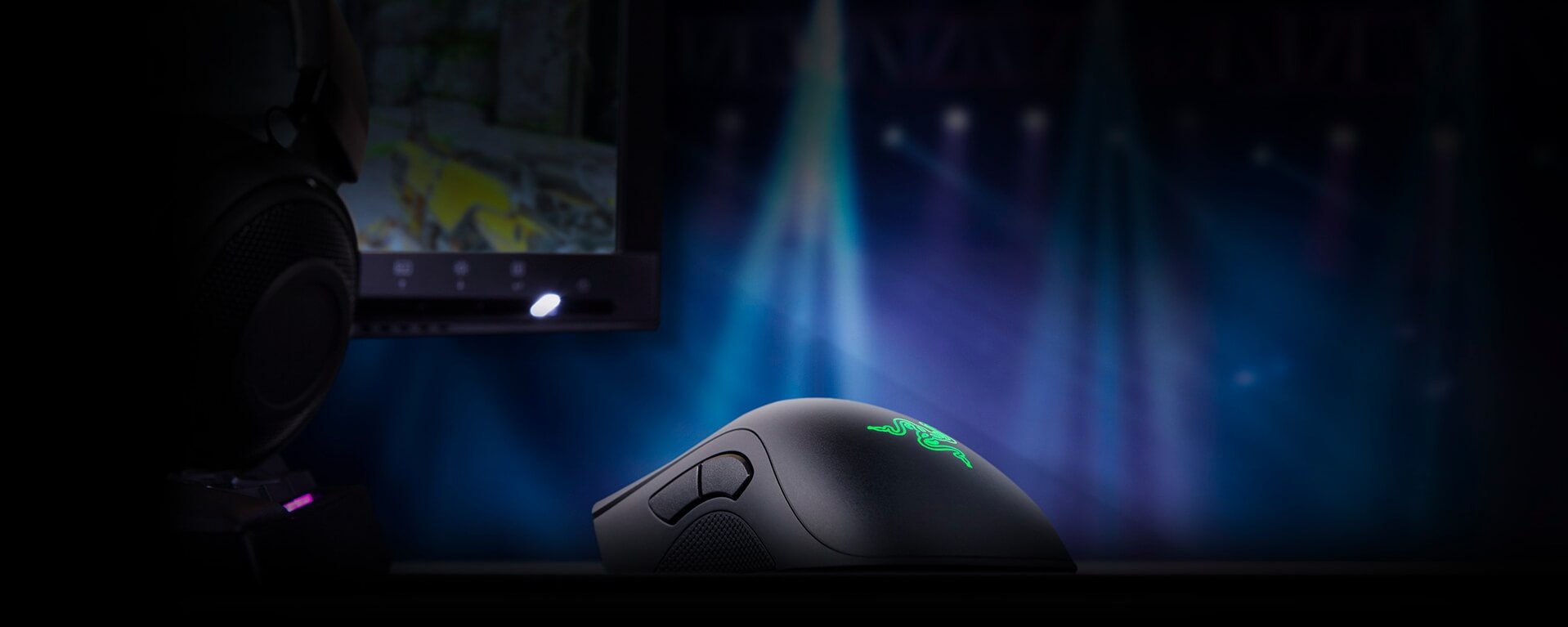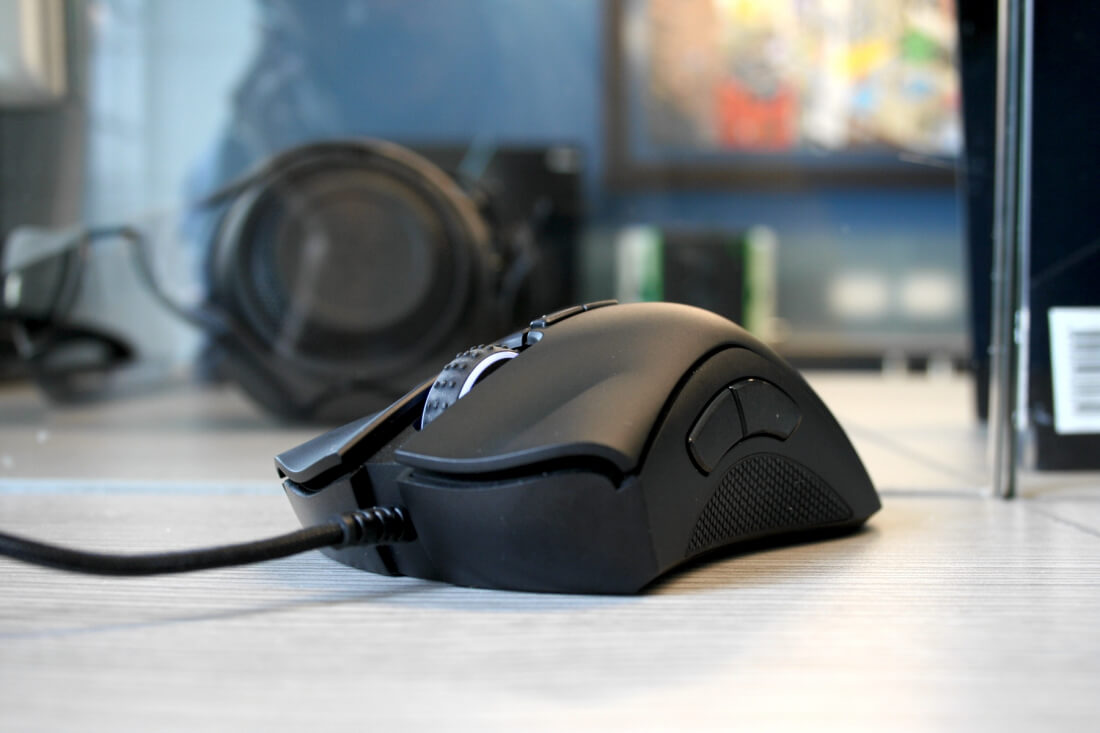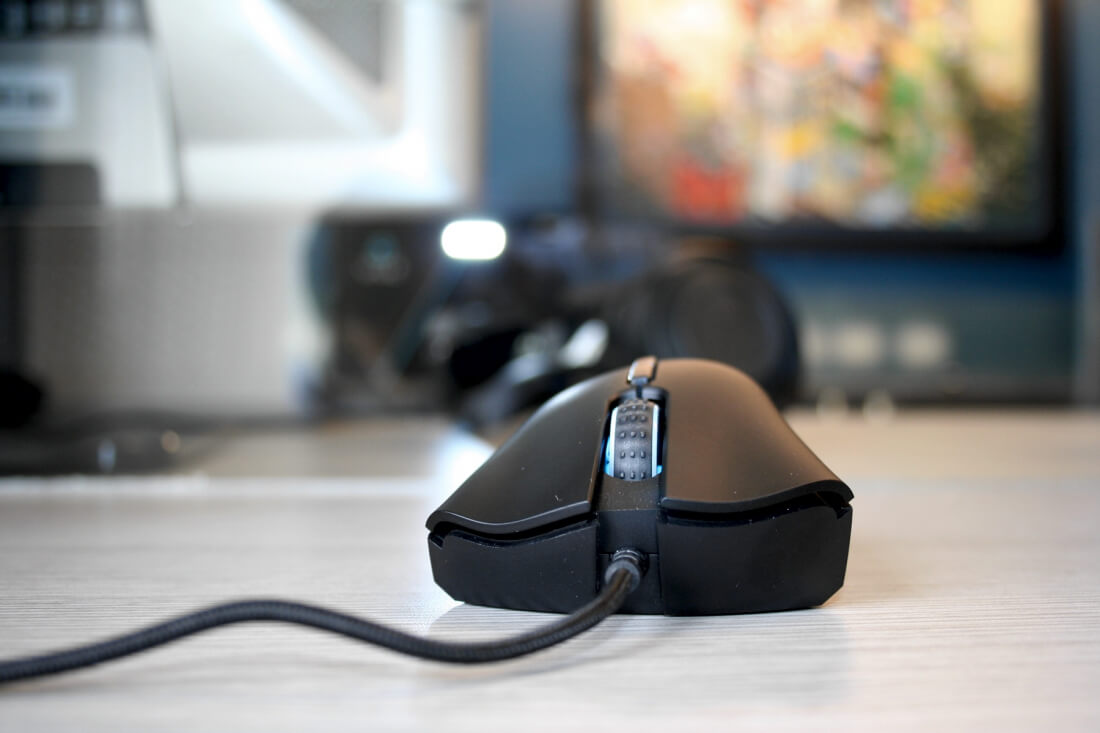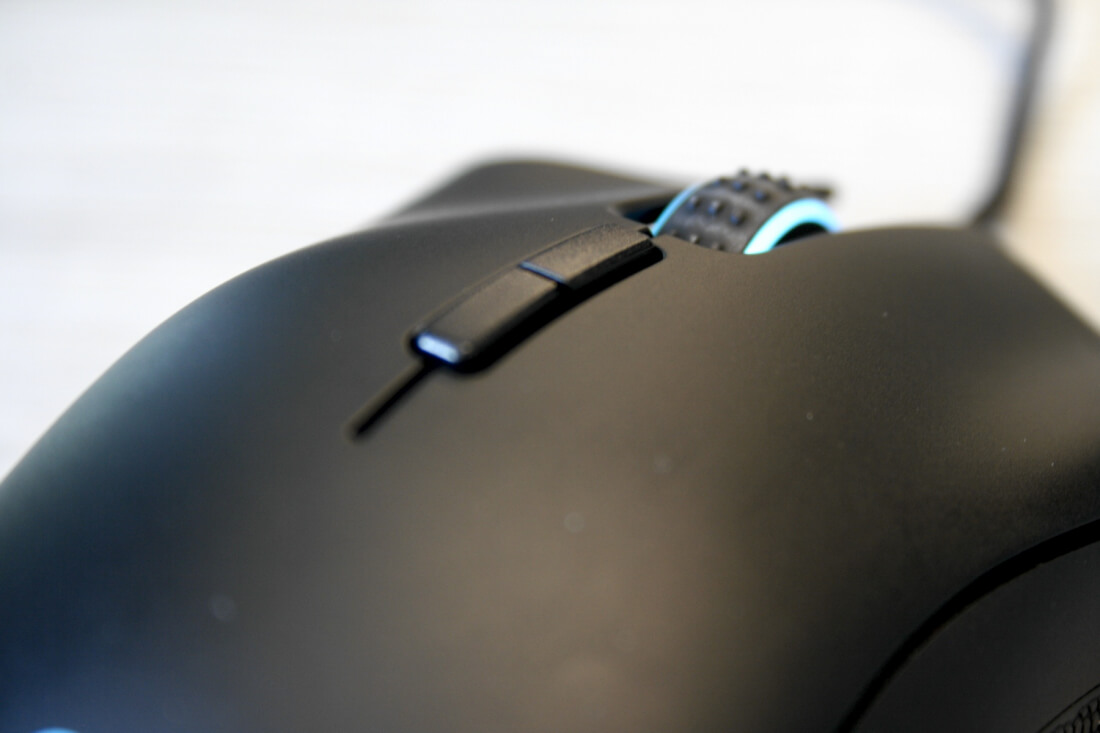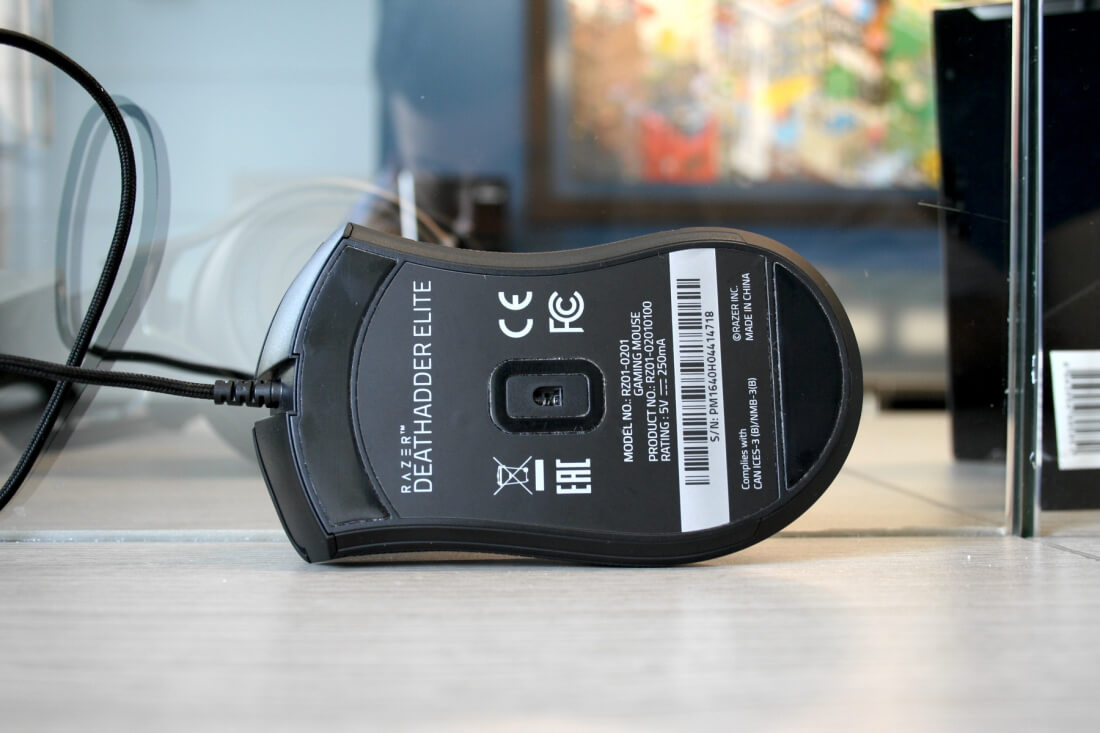The Razer DeathAdder has often been regarded as one of the top gaming mice since it emerged back in 2006. While there have been a few iterations over the years, Razer has focused on incremental upgrades without ever changing what makes the DeathAdder beloved by so many.
For its tenth anniversary the update came in the form of the DeathAdder Elite. The mouse preserves the same comfortable and ergonomic design that we know, with a few improvements inside and out, most importantly endurance.
The Elite is around 5 inches long, 1.7 inches high, and 2.7 inches at its widest. Weighing in at 105 grams, it's among the lightest mice of its size and is a good fit for a variety of hand sizes and grips. While it's billed as a gaming mouse, its simple, effective design makes it suitable for any type of user.
This is a direct replacement to the DeathAdder Chroma that was released a couple of years ago, bringing modest upgrades to sensor DPI, accuracy, and a couple extra buttons.
Design and Features
Razer hasn't changed the overall shape of the mouse: it has the same classic scooped body, two oversized thumb buttons, and its sides are slightly slanted inwards which along with the textured rubber pads offer a nice and secure grip. The DeathAdder has a nice low profile that should fit comfortably with either a claw grip or a palm grip, and the smooth matte plastic surface feels nice underneath the hand.
The Elite features two more (DPI) buttons than the previous-gen Chroma for a total of 7 buttons.
The left and right click buttons feature subtle grooves for your fingers to rest, which not only helps with comfort but also with quick lateral movements. They offer fast actuation times and provide a satisfying click. Razer worked with Omron on the Elite's mechanical switches and claims they are "tweaked for the fastest response times for gaming and for extended durability up to 50 million clicks."
Longevity is specially important here given the DeathAdder's mixed track record in this department --- it has a penchant for erratically registering multiple duplicate clicks after a few months of use.
Admittedly we are fans of the DeathAdder at TechSpot, three people in the office are using it and we've bought almost a dozen of them in the past 5+ years. A portion of those were used through their expected lifespan, but three failed on us while still relatively new. The last one, a Chroma model, died on us after 6 months of moderate use. Hopefully the new switches will make this a thing of the past.
Moving on to the two side buttons they are essentially unchanged from the Chroma: large and easy to reach with good tactile feedback and audible click. They are positioned above the textured pad near the bottom of the mouse, styled with a slight curve and subtle texture to match the overall design.

DeathAdder Chroma (left) / DeathAdder Elite (right)
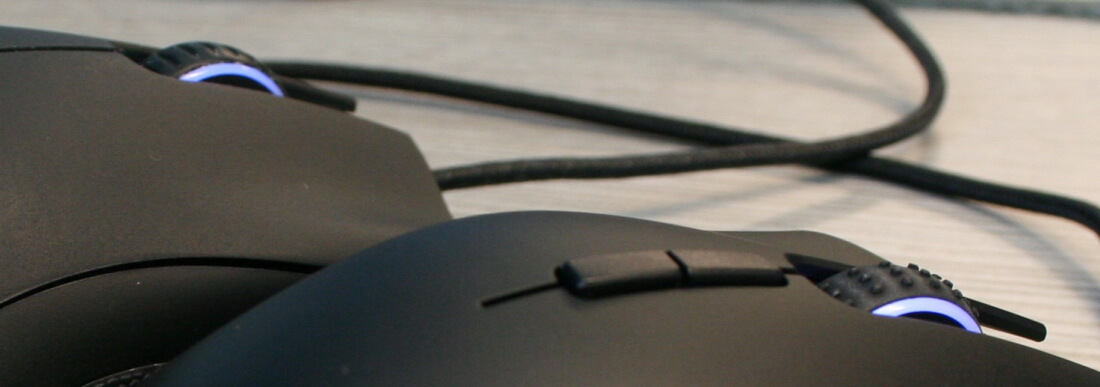
Redesigned scroll wheel for a more tactile feel
The scroll wheel has been slightly redesigned and now features a few tiny coarse nubs on its surface for a more tactile feel. The click mechanism of the wheel doesn't have much travel and there isn't much tension on the scroll steps which I actually like. It's well suited for gaming and browsing.
The only immediately visible change is the addition of two buttons right below the scroll wheel. These allow you to switch between DPI settings on the fly, a much requested feature for gamers who need the flexibility to jump from a lower setting for sniping accuracy to higher for fast paced action. The DPI switching buttons have a soft press and are mostly out of the way but easy to reach when needed.
All seven buttons can be programmed to do anything you like using Razer's Synapse software.
The bottom of the Elite features two oversized teflon feet above and below the all-new "5G Optical Sensor" which boasts a DPI range that stretches from 100 DPI all the way up to 16,000 in 100 DPI increments, as well as 99.4 percent resolution accuracy and tracking speeds of 450 inches per second.
I don't have the technical equipment to put those numbers to the test but I can tell you the DeathAdder Elite delivers exceptional tracking accuracy and consistent responsiveness at any speed. There's no unusual jitter, no angle snapping as far as I can tell and no skipping.
The mouse slides very well and is relatively light for its size at about 105g --- roughly the same as the Logitech G900 Chaos Spectrum and much lighter than the 145g Logitech G502 Proteus Core.
The braided cable is about 7 foot long and ends with a gold plated USB connector. It doesn't get on the way and actually feels softer and more flexible than that of its predecessor's, ensuring you won't get snagged and can enjoy smooth gaming sessions --- not that it was ever a problem with the Chroma.
Razer's Chroma RGB LED lighting system looks nice and isn't tacky nor it screams gamer. Light comes from the scroll wheel and logo on the back and can be configured to 16.8 million different colors, as well as synchronized with other Razer gear (keyboard, headphones) with Chroma backlighting.
Software
All Razer mice function as plug and play devices, meaning you don't need to install the accompanying Synapse software before using the Elite. The mouse doesn't attempt an install the first time it's hooked into your PC either. However, if you're interested in customizing every aspect of the DeathAdder Elite, Razer Synapse is straightforward to use.
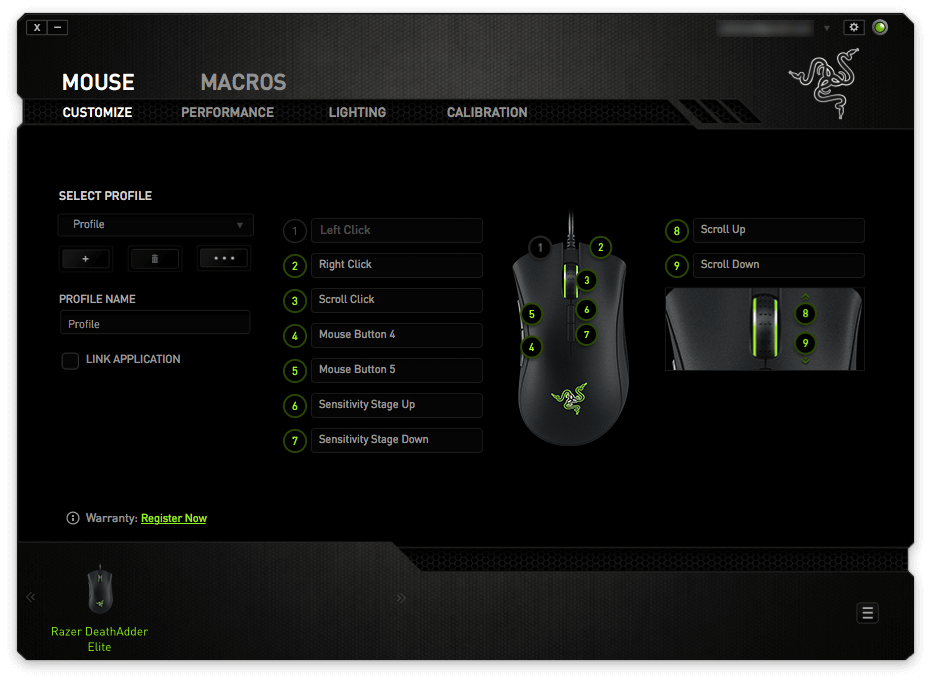
There's a tab for macros and another one simply titled 'mouse' that contains sub-sections where you can map different actions to each button, create profiles and link them to specific games or applications, configure the mouse's sensitivity stages, polling rate and acceleration, configure the Chroma RGB LED lighting, calibrate the mouse for different surfaces, track stats, and tinker with all sorts of other settings. Razer's Synapse software also supports automatic profiles tied to specific games.
In lieu of internal storage, the DeathAdder Elite saves all your settings to the cloud so you can access them anytime from anywhere --- so long as you have access to an internet connection.
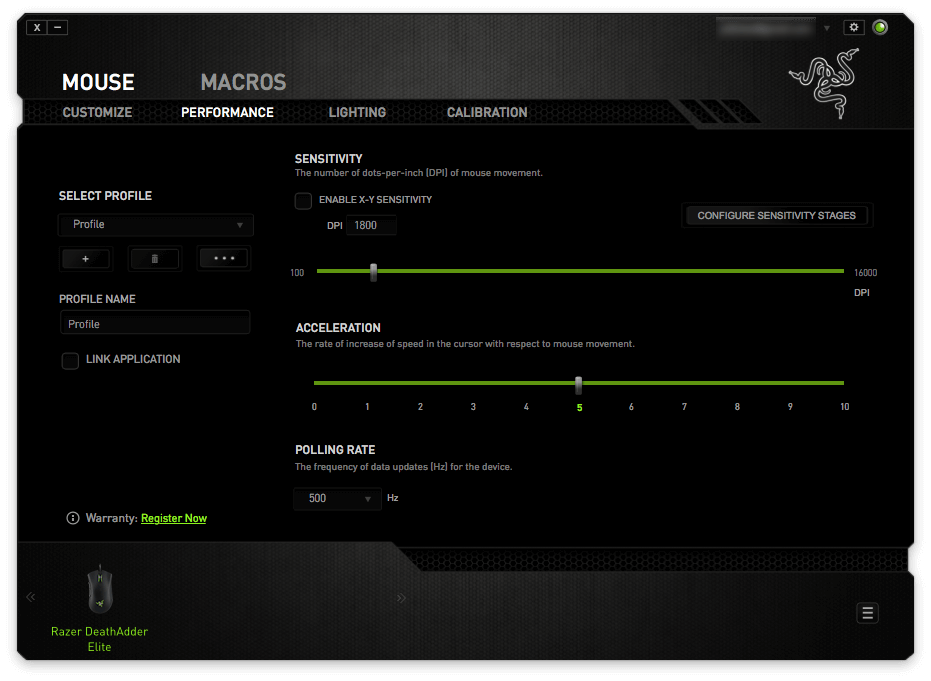
Overall Synapse is solid and feature rich but also riddled with a few bad habits, like the fact that you are forced to create an account and login in order to configure the mouse, even if you don't care about sync. The software is updated often and it used to require a reboot after each update, but it appears this annoyance has been taken care of now which is great.
Conclusion
There is a reason the Razer DeathAdder series has remained mostly the same over the years. Its contoured design fits comfortably in the hand and offers enough functionality for seasoned gamers without going overboard. The DeathAdder Elite builds upon that reputation while bringing some modest upgrades to its sensor, new switches, two new buttons, and other minor changes.
It's still easy to grasp, well constructed, and performs well across a wide variety of game genres. I didn't experience any issues with the mouse's accuracy during my month using the Elite.
Its accompanying Synapse software provides lots of configuration options, and despite a couple of annoyances I still believe it's a solid software offering that keeps on improving.
Shopping shortcuts:
- Razer DeathAdder Elite on Amazon
- Razer DeathAdder Elite on Newegg
- Razer DeathAdder Elite on Razer.com
The Razer DeathAdder Elite is an excellent gaming mouse that works phenomenally for day to day work, too. Priced at $70, it's not inexpensive but offers good value against direct competitors such as the Mionix Castor (similar layout, built-in memory), and the Logitech G502 Proteus Core, which is a good alternative if you prefer a weightier mouse and need more buttons.
Pros: Best-in-class ergonomics. On-the-fly DPI switching. Buttons are large and accesible. New mechanical switches. Chroma lighting looks great, is customizable.
Cons: No on-board memory. No DPI light indicator. Synapse requires you to log in.
